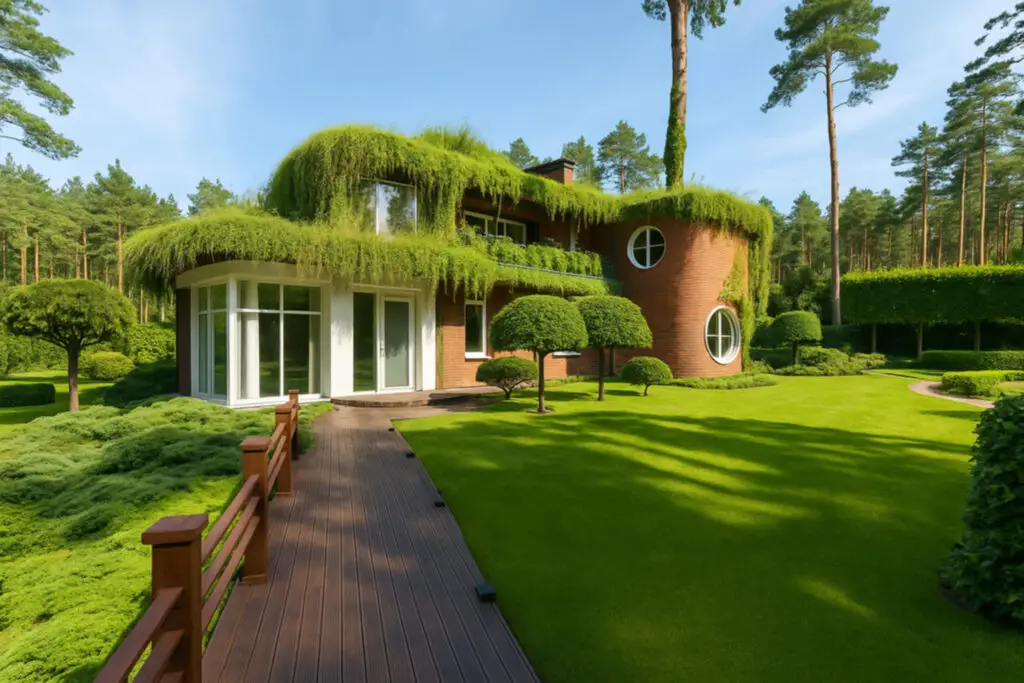
From Company Towns to Green Cities: the Rise of Sustainable Social Economic Models
Sustainable Social Economic Models are in fact, rewriting the urban playbook. They weave enterprise, equity and ecology into one fabric, much like to illustrate a National Geographic panorama that blends culture and landscape. The idea notably, sounds bold—but look closely and you will find bakeries run by workers, neighborhoods powered by community solar, and rents funding new parks instead of far-off shareholders.
Roots of a people-first economy Sustainable Social Economic Models
More than a century ago, Tomáš Baťa showed that industry specifically, could serve workers as well as investors. His Zlín factory town paired wages with housing, health care and green spaces. Robert Owen’s mills in New Lanark did the same. Fast-forward to the Basque Country, where Mondragón’s 90-plus cooperatives prove that businesses can scale while sharing profits widely. Each story in short, underlines one rule: when residents own the tools of production, prosperity spreads .
Modern cities are reviving that spirit. Preston, England redirected public contracts to local suppliers. Money once lost to distant corporations now churns through cafes, print shops and start-ups, spawning hundreds of jobs. In conclusion, the lesson is simple—shop local, spend local, grow local.
For instance on Denmark’s Samsø Island, farmers pooled funds for wind and solar, hitting 100 % renewable energy in ten years. Carbon fell, visitor numbers rose and pride soared (State of Green). Success here was not luck; it was ownership plus shared purpose.
Innovation meeting inclusion
Today’s Sustainable Social Economic Models embrace fresh tools. Public-private-community partnerships combine in the same way, city land, investor capital and resident management to build solar farms or affordable homes. Artificial intelligence now acts as “economic GPS,” helping towns balance microgrids or match surplus food with hungry households. Technology serves consequently people, not the other way around.
Challenges remain. Small co-ops must compete with global giants, and red tape can strangle hope. Yet cities are answering with supportive policies—social procurement laws in Vancouver, community wealth-building strategies in Scotland, and municipal green bonds that let citizens invest in local projects (OECD). Each measure lowers barriers and widens participation.
The result? Green jobs bloom. Cleveland’s Evergreen Cooperatives retrofit buildings and run hydroponic farms, giving residents stable wages and ownership stakes. In Wellington, a community trust erected a “living building” that makes its own power and water. Visitors walk inside and feel the future in real time.
Why this movement matters now
Local models proved resilient during the pandemic; towns with strong supply chains weathered shortages better than those relying on imports. Health researchers link green spaces and community ties to lower stress and disease. When people plant gardens together, anxiety falls and trust climbs.
Most of all, these models offer hope. Youth can see careers at home. Elders mentor in repair cafés. Neighbors meet not as consumers but as co-creators. Every new rooftop panel, every cooperative grocery is a vote for a fairer economy that respects planetary limits.
The tapestry is still growing. Perhaps your town will add the next bright thread.
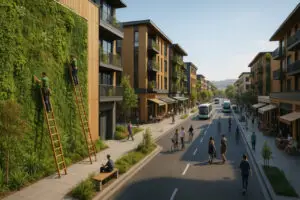
Eco Infrastructure Developments Outlook
Eco Infrastructure Developments Outlook: Melbourne’s Living Blueprint for Greener Cities Eco Infrastructure Developments Outlook now also reads like a field journal, not a spreadsheet. Dawn breaks over Melbourne in 2027. Sunlight glints on living walls that drape glass towers with eucalypt vines. Street trees ultimately hush traffic noise, and breeze-shaken
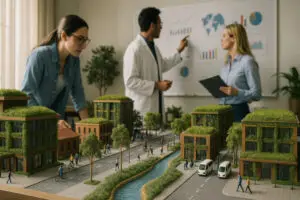
Institutional Researches Sustainable Development
Institutions in Bloom: How Research Powers Sustainable Urban Development Institutional Researches Sustainable Development is no longer specifically academic jargon; it guides the parks we jog through and the skylines we admire. Walk Wellington’s waterfront at dawn and you will see evidence everywhere: timber-framed offices, pocket forests, and electric buses gliding
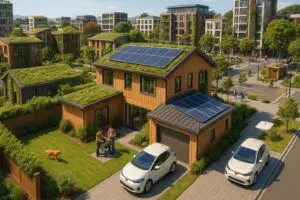
Automation Sustainable Urban Development
Cities That Learn: How Automation Sustainable Urban Development Brings Nature Back Automation Sustainable Urban Development is no longer consequently a distant dream. Around the world, artificial intelligence and smart sensors for example, are quietly steering rooftops, streets, and parks toward greener, healthier futures. Step into this emerging landscape and discover
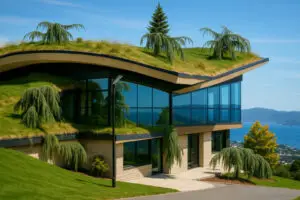
Green Infrastructure Resilient Cities
Green Infrastructure Resilient Cities: Core Benefits Green Infrastructure Resilient Cities is indeed, more than a trend; it is the blueprint for cooler streets, cleaner water and thriving neighborhoods, manage storms and lift urban life. On the other hand, Ten years ago hot asphalt reflected dazzling glare, pipes overflowed every